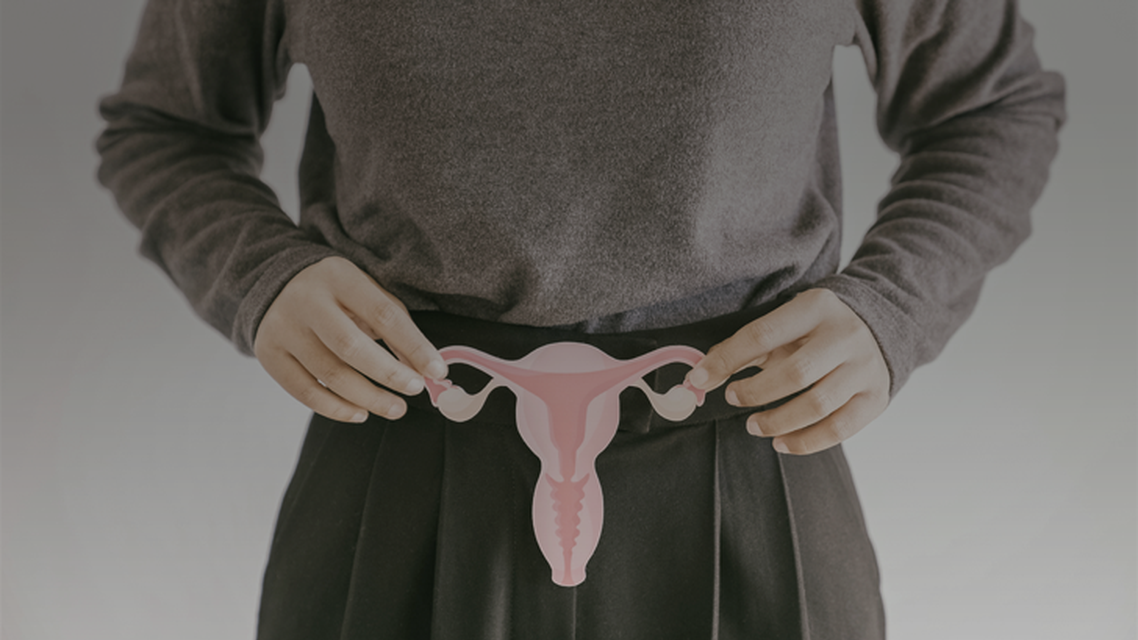Announcer:
Welcome to CME on ReachMD. This activity, titled “Case of the Patient in Midlife: Weighing Potential Changes in ASCCP Guidelines” is provided by Omnia Education.
Prior to beginning the activity, please be sure to review the faculty and commercial support disclosure statements as well as the learning objectives.
Dr. Huh
Effective triage tests are needed to help decide which patients should go on to more diagnostic testing for cervical cancer and which can just be followed. The focus of our discussion today is to discuss whether current triage algorithms can be improved to lessen our diagnostic uncertainty in patient management.
This is CME on ReachMD, and I'm Dr. Warner Huh.
Dr. Dilley:
And I'm Dr. Sarah Dilley.
Dr. Huh:
All right, Sarah, so let's talk about this case. We’ve got a 37-year-old patient who is in the office discussing results from her recent cervical cancer screening tests. She was co-tested, and the pathology indicated ASCUS [atypical squamous cells of undetermined significance] on cytology. Based on what we know in the 2019 ASCCP [American Society for Colposcopy and Cervical Pathology] guidelines, how would you triage this patient based on the results of her HPV [human papillomavirus] test?
Dr. Dilley:
Yeah, so we know these are risk-based guidelines. And so the next step is really based on what the data shows the patient's risk for high-grade cervical lesion would be. So someone who has an ASCUS Pap who had negative HPV, I would just recommend repeating in 3 years. We know there's less than a 1% risk of CIN3 or greater in those patients.
For patients who are HPV positive, but not for 16 or 18, for 1 of the other 12 oncogenic HPV types, I would recommend colposcopy. Similarly for patients who are untyped, but we know that they're high-risk HPV-positive. And then, as well, patients who are HPV positive for 16 or 18, I would also recommend colposcopy. That's the group that would be highest risk for those high-grade lesions with 9% risk of CIN3+ or greater.
Dr. Huh:
I think the most important thing to recognize was that prior to 2019, the prior guidelines, we had these algorithms that we used that, for the most part, described what Dr. Dilley is describing, which is if you have an ASCUS HPV-positive result, you go to colposcopy.
But now we have what's known as a risk management-based guideline mechanism. And if you download the app for either your Android phone or for your iPhone, you can actually punch in these numbers and it'll tell you, largely the same thing that we already know, which is that these patients need colposcopy, but instead, we're basing this on a risk number or risk percentage that will tell us basically how to best manage these patients. And it's on this concept of equal management for equal risk. So even though the recommendation that Dr. Dilley’s described as the same as it was in 2012, how we get there is a little bit different.
Dr. Dilley:
So, Warner, let's take this a few steps further. What if our patient’s cytology had been LSIL [low-grade intraepithelial lesion] or normal? What approach to triage would you take based on results from the HPV test?
Dr. Huh:
So, Sarah, if the patient's Pap in this 37-year-old was consistent with LSIL, then in general, we would recommend that that patient be referred to colposcopy irrespective of their HPV result. And that's largely consistent with the recommendations that come up in the ASCCP app. If they have a normal Pap, it's a little bit different. And so in general, in a woman that has a normal Pap and is HPV negative, we recommend routine screening, typically every 5 years, assuming that they've had previous normal screening. If they're positive for 16 and 18, then we really strongly recommend that that patient be referred to colposcopy.
And then if they're positive for the 12 other high-risk types, in general, we recommend some sort of repeat testing, typically at 12 months. And that depending on those results, those patients may or may not be referred to colposcopy at that point.
But what I want to stress is, if you have a patient with a normal Pap, and they're HPV 16 and 18 positive, that patient should be referred for colposcopy.
Dr. Dilley:
It's just all based on what that risk is.
Dr. Huh:
Right. Really want to stress this point, we're trying to get providers to steer away from thinking simply about algorithms, but more about calculated risk percentages. And that if you hit a certain risk threshold, then you treat the patient the same way. And in general, for our management guidelines, there are 5 recommendations: treatment, referral to colposcopy, return in 1 year, return in 3 years, and return in 5 years. And those each have what we call actionable clinical thresholds. So if you are above the threshold, you go into that category. And so in many ways, we've simplified this, but the determined risk percentage is really, really important to determine what the next step is.
So I guess the one thing that I wanted to ask you, Dr. Dilley, is do you think that the 2019 ASCCP guidelines result in perhaps too many patients moving on to colposcopy? And is there perhaps a better way we can triage women more effectively so they could avoid colpo altogether?
Dr. Dilley:
Yeah, I think that there are still a lot of patients who are getting referred when their risk is not that high of having a high-grade lesion. So like I mentioned earlier, patients who are HPV positive, but it's not 16 or 18, the risk is still quite low of having a lesion that could potentially turn into cancer. And those patients might be undergoing colposcopy unnecessarily, which is not an easy procedure for a lot of patients. It can be uncomfortable and can lead to significant stress for the patient, cost to the system. And so I do think that we are probably overtreating and over-colpo’ing these people.
Dr. Huh:
I totally agree with you. And I think there are definitely additional biomarkers that can be used to further investigate and triage whether patients, in fact, really need to undergo colposcopy.
For those just tuning in, you're listening to CME on ReachMD. I'm Dr. Warner Huh, and here with me today is Dr. Sarah Dilley. We're just about to delve further into emerging concepts for cervical cancer screening.
And so it kind of goes to my next question, which is, can you tell us a little bit about an FDA-approved approach to screening in the United States that might identify a patients’ risk status better than [the] current triage algorithm?
Dr. Dilley:
Yeah, so there is a dual-staining technology that was FDA-approved in 2020. And what dual staining means is it utilizes immunohistochemistry to identify markers of cell proliferation and HPV activity. This dual-stain technology specifically looks for 2 different proteins that can be seen across the spectrum of malignant and premalignant tissues to help diagnose and risk-stratify these patients. So specifically, it looks at p16 and Ki-67.
So p16 is a tumor suppressor protein that is basically upregulated when there's active HPV. And so it's an indicator of an active HPV infection. It also looks at Ki-67, which is a common marker of cell proliferation or rapid cell division that we see in cancer and in precancerous conditions.
It's important to note that with this dual-staining test, both the Ki-67 and the p16 have to be expressed in the same cell in order for dual staining to be considered positive. If you only have one or the other in the same cell, then it's not considered to be positive.
So a lot of data has shown that using these 2 markers when they're positive, it has a very high positive predictive value for a CIN2+ lesion, especially when you compare that to just cytology alone when triaging for an HPV-positive patient.
Dr. Huh:
Yeah, I couldn't agree more. I think providers need to be aware of this FDA-approved triage test that's really available to them, because it's more than just about getting a Pap and HPV [test]. You know, in certain categories, we need to start thinking about how we better triage these patients.
What many of our listeners probably don't realize are the thousands and thousands of women who have participated in studies that are related to what we call dual staining. And I think the most important study is the IMPACT trial. It was a registration trial for the FDA that enrolled almost 35,000 women at 32 collection sites across the United States, and almost 5,000 of these women were HPV positive, with over 500 cases of CIN2 or worse.
So there's a huge amount of data from several investigators across the world, including investigators at the NCI [National Cancer Institute]. And so I just highlight this because of the robustness of the data. And it's something that I think that every provider who does cervical cancer screening really needs to consider as a part of their triage strategy.
Dr. Dilley:
And in light of that, let's go back to our patient, our 37-year-old, and let's talk about how dual staining could be incorporated into our algorithm and how we can better tailor our treatment and our triage to her specifically.
Dr. Huh:
Yeah, so going back to that case. Again, this was a 37-year-old who's in the office and was co-tested. And the pathology indicated ASCUS on cytology. And so the question is, where do you go forward from here? Just to kind of use this as an example: So obviously, we talked about if the patient was HPV positive, in general, we would recommend that the patient undergo colposcopy. And I think what's interesting is that there might be some value of using dual stain in this setting, as well, in terms of determining who really would benefit from colposcopy.
But let's just change the scenario a little bit and say that, in fact, that this woman had a normal Pap and was HPV positive. So what would happen in that circumstance? Well, I think in that circumstance, if you use dual staining, if the patient tested positive for the 12 other high-risk types of HPV, that in other words, they did not test positive for 16 or 18, then you would do a dual stain, and if the dual stain was positive, then you would refer that patient on to colposcopy. And if the patient was dual-stain negative, you could potentially have that patient follow up in, let's say, 12 months. So really what it does, is it better triages patients who had more benefit from undergoing colposcopy than patients with cytology.
Now in the previous primary screening algorithm, we originally had recommended that these patients undergo reflex cytology, but I think what we're quickly realizing is dual staining is actually a much, much better triage test.
Dr. Dilley:
Right, it really underscores the importance of that HPV [test] and continues to kind of reinforce that that initial cytology, even though it was normal, may not be an indicator of what's actually going on with that patient. I think it's an important opportunity to use this technology that is really helping shift to a more personalized, biomarker-prevalent treatment strategy.
Dr. Huh:
Yeah, you're exactly right. And again, we're trying to narrow down what the risk is to the individual patient and basically lessen the uncertainty associated with it. I think the one thing that we haven't talked about, which I think is beyond the scope of this podcast, is there are other biomarkers, and there's a lot of interest that's being generated related to extended genotyping. Extended genotyping being getting down to the nitty-gritty of what other types of HPV they have, outside of 16 and 18, within that 12 other high-risk set, because we have some data there to indicate that there's intermediate risk or even low, low risk. And I think in the near future, you're probably going to see some more data that basically uses that extended genotyping dataset to basically even hone risk down even to a more precise level.
Dr. Dilley:
Yeah, and I think that with the right guidance for practitioners, I think that that will really help with some of the burden that the clinics and our primary care providers and general ob-gyns who are really busy in the clinic who have a lot of patients who they need to follow up being able to tailor exactly who the highest risk patients and who they need to kind of focus their efforts on.
Dr. Huh:
So before we wrap up, Sarah, what's your one take-home message for our audience today?
Dr. Dilley:
I think the take-home for me that's really exciting about all of this is that, you know, it's not that we're abandoning the Pap smear and getting rid of the old ways of doing things. I think we're just building on what's been done and really bringing it into the present. Like I mentioned before, I think oncology is really moving towards kind of biomarker-driven management and treatment, molecular testing, that kind of thing. And I think that our patients who are undergoing cervical cancer screening really deserve to have the best technology available.
Dr. Huh:
Yeah, I mean, I have almost the exact same message I want to pass on, which is that we have this triage test; it definitely hones the risk. And I would just ask providers not to forget about it. And, I'm sure our listeners are like, “Is it going to be included in the ASCCP app?” I'm sure that it's being looked at by our ASCCP colleagues.
So unfortunately, that's all the time that we have today. So I want to thank our audience for listening in and thank you again, Dr. Dilley, for participating and sharing your experience and insight. It was awesome speaking to you today.
Dr. Dilley:
It's always a pleasure, Dr. Huh. Thank you so much.
Announcer:
You have been listening to CME on ReachMD. This activity is provided by Omnia Education.
To receive your free CME credit, or to download this activity, go to ReachMD.com/Omnia. Thank you for listening.
 In support of improving patient care, Global Learning Collaborative (GLC) is jointly accredited by the Accreditation Council for Continuing Medical Education (ACCME), the Accreditation Council for Pharmacy Education (ACPE), and the American Nurses Credentialing Center (ANCC) to provide continuing education for the healthcare team.
In support of improving patient care, Global Learning Collaborative (GLC) is jointly accredited by the Accreditation Council for Continuing Medical Education (ACCME), the Accreditation Council for Pharmacy Education (ACPE), and the American Nurses Credentialing Center (ANCC) to provide continuing education for the healthcare team.














Facebook Comments